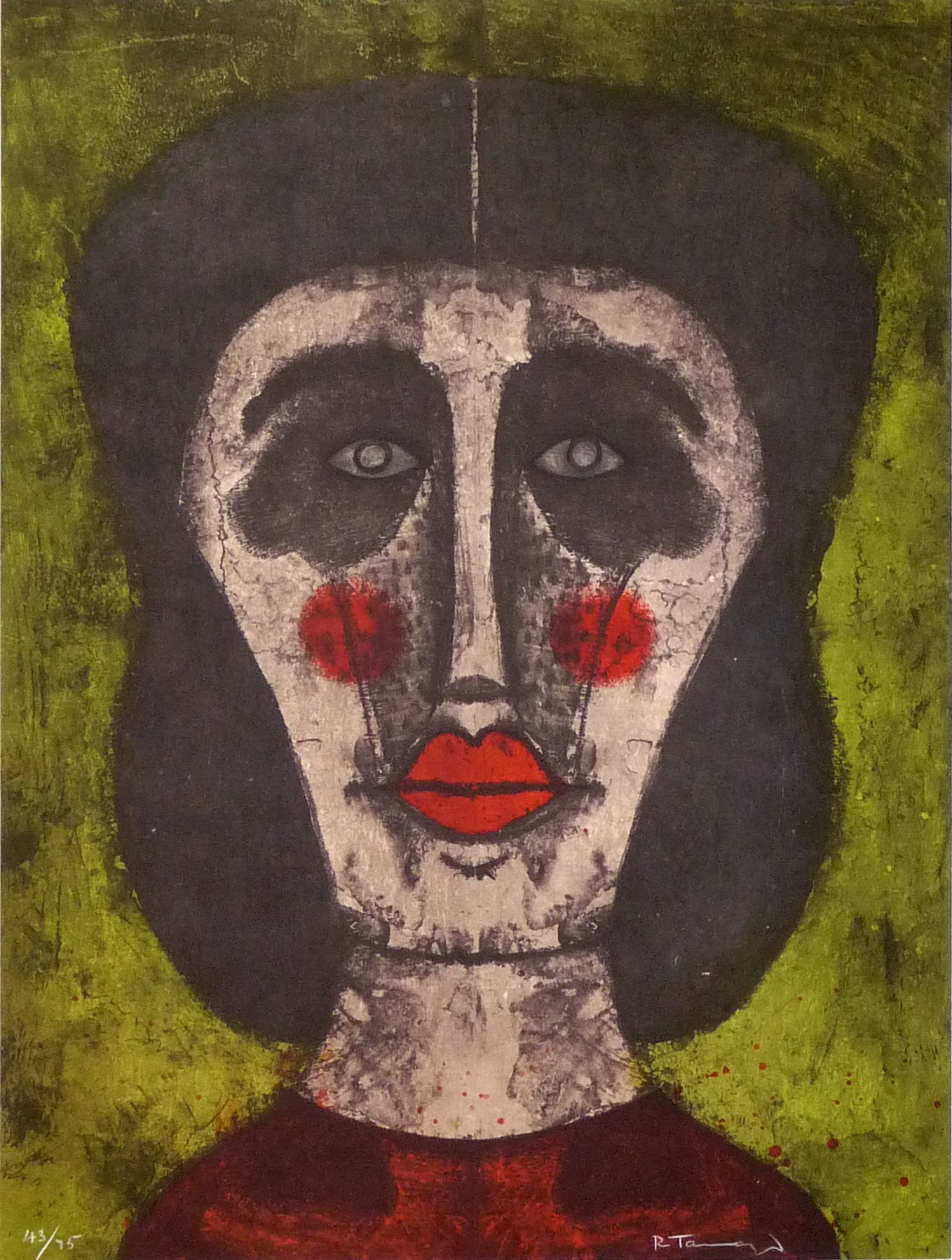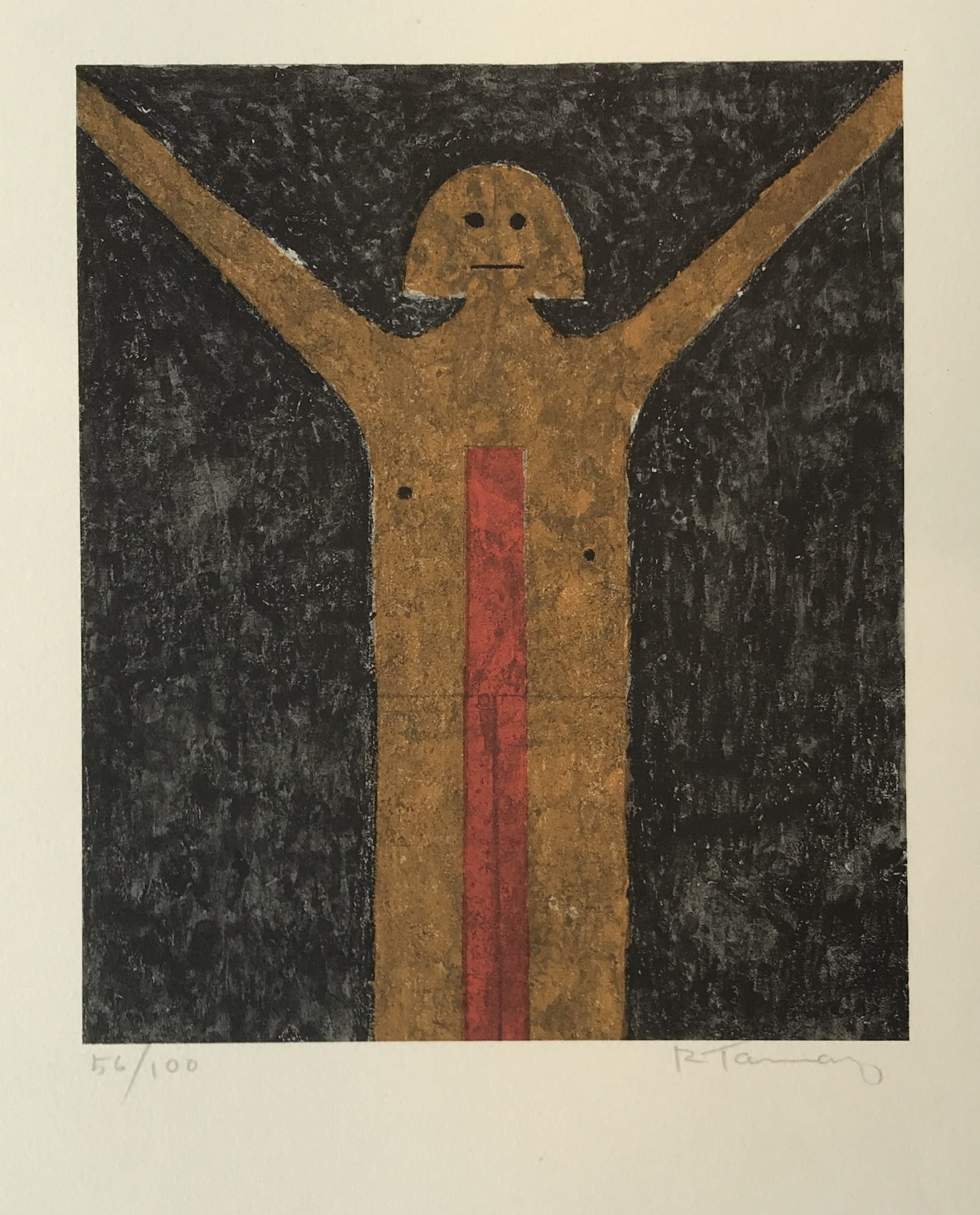Rufino Tamayo – Cabeza de Mujer
Rufino Tamayo, Cabeza de Mujer is an original Lithograph in colors on Guarro Paper. This print is from the signed in the lower right and numbered in the lower left from the edition of 75. Published and Printed by Ediciones Poligrafa, Barcelona. Pereda 144.
Rufino Tamayo was born on August 26, 1899, in Oaxaca, Mexico. Orphaned by 1911, he moved to Mexico City to live with an aunt who sent him to commercial school. Tamayo began taking drawing lessons in 1915 and by 1917 had left school to devote himself entirely to the study of art. In 1921 he was appointed head of the Department of Ethnographic Drawing at the Museo Nacional de Arqueología, Mexico City, where his duties included drawing pre-Columbian objects in the museum’s collection. Tamayo integrated the forms and slate tones of pre-Columbian ceramics into his early still lifes and portraits of Mexican men and women.
| Title | Cabeza de Mujer |
|---|---|
| Alt. Title | Woman’s Head |
| Medium | Lithograph |
| Year | 1973 |
| Edition | 75 |
| Catalogue Raisonné | Pereda 144 |
| Signature | Signed |
| Size | 30 x 22 (in) 76 x 56 (cm) |
| Price | SOLD |
Description
Rufino Tamayo, Cabeza de Mujer is an original Lithograph in colors on Guarro Paper. This print is from the signed in the lower right and numbered in the lower left from the edition of 75. Published and Printed by Ediciones Poligrafa, Barcelona. Pereda 144.
Rufino Tamayo was born on August 26, 1899, in Oaxaca, Mexico. Orphaned by 1911, he moved to Mexico City to live with an aunt who sent him to commercial school. Tamayo began taking drawing lessons in 1915 and by 1917 had left school to devote himself entirely to the study of art. In 1921 he was appointed head of the Department of Ethnographic Drawing at the Museo Nacional de Arqueología, Mexico City, where his duties included drawing pre-Columbian objects in the museum’s collection. Tamayo integrated the forms and slate tones of pre-Columbian ceramics into his early still lifes and portraits of Mexican men and women.
The first exhibition of Tamayo’s work in the United States was held at the Weyhe Gallery, New York, in 1926. The first of his many mural commissions was given to him by the Escuela Nacional de Música in Mexico City in 1932. In 1936 the artist moved to New York, and throughout the late thirties and early forties the Valentine Gallery, New York, gave him shows. He taught for nine years, beginning in 1938, at the Dalton School in New York. In 1948 Tamayo’s first retrospective took place at the Instituto de Bellas Artes, Mexico City. Tamayo was influenced by European Modernism during his stay in New York and when he traveled in Europe in 1957. In that year he settled in Paris, where he executed a mural for the UNESCO Building in 1958. Tamayo returned to Mexico City in 1964, making it his permanent home. The French government named him Chevalier and Officier de la Légion d’Honneur in 1956 and 1969, respectively, and he was the recipient of numerous other honors and awards. His work was exhibited internationally in group and solo shows. Important Tamayo retrospectives took place at the São Paulo Bienal in 1977 and the Solomon R. Guggenheim Museum, New York, in 1979. He died in Mexico City on June 24, 1991.
Additional information
| Title | Cabeza de Mujer |
|---|---|
| Alt. Title | Woman’s Head |
| Medium | Lithograph |
| Year | 1973 |
| Edition | 75 |
| Catalogue Raisonné | Pereda 144 |
| Signature | Signed |
| Size | 30 x 22 (in) 76 x 56 (cm) |
| Price | SOLD |




